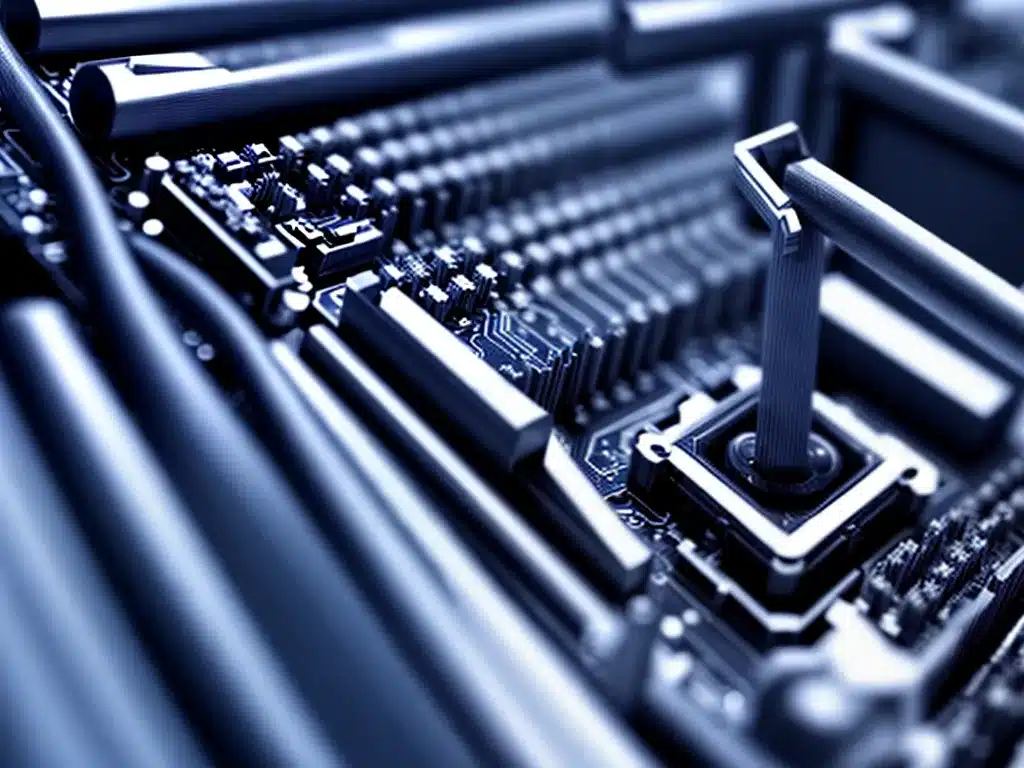
What is Hyper-Threading?
Hyper-Threading is an Intel technology that allows each CPU core to execute two threads simultaneously. This enables the operating system to see two virtual cores for each physical core, essentially doubling the number of threads that can run on the CPU.
For example, a 4-core CPU with Hyper-Threading enabled will appear to the operating system as an 8-core CPU. This allows more threads and processes to run concurrently, improving overall system performance.
How Hyper-Threading Works
Hyper-Threading works by duplicating parts of the CPU architecture for each core. This includes:
-
Architectural registers – General purpose registers that store data for thread execution. With Hyper-Threading, each physical core has two sets of architectural registers, one for each thread.
-
Execution resources – Components like arithmetic logic units (ALUs) that perform computations. Execution resources are shared between threads on a single core.
-
Caches – Fast memory pools like L1 and L2 cache. Caches are shared between threads on the same core.
This duplication allows each CPU core to quickly switch between threads on a per-cycle basis, increasing overall throughput and efficiency.
Benefits of Enabling Hyper-Threading
Enabling Hyper-Threading can provide the following benefits:
-
Increased performance – More threads allows your CPU to do more work in parallel. You’ll see anywhere from 10-30% better performance in multi-threaded workloads.
-
Better multi-tasking – Your system will be more responsive when running multiple demanding apps. Each app has more CPU resources available.
-
Faster content creation – Hyper-Threading accelerates content creation like video editing, 3D rendering, code compiling, etc. These tasks thrive with extra threads.
-
Higher efficiency – Less idle time for each core. Enabling Hyper-Threading keeps your CPU resources well utilized.
When to Enable Hyper-Threading
Here are some recommendations on when you’ll benefit most from Hyper-Threading:
-
If you frequently use multi-threaded apps like games, media editors, compilers, etc.
-
When running intensive server workloads on a database server, web server, etc.
-
For compute-heavy workstation tasks like 3D modeling, video editing, simulation, etc.
-
If you multitask frequently and want a more responsive system.
Hyper-Threading provides less benefit for older single threaded apps. But most modern software is optimized for multi-core CPUs.
How to Enable Hyper-Threading in BIOS
Here are simple steps to enable Hyper-Threading:
-
Restart your computer and enter the system BIOS. Usually by pressing F2, F10 or Delete during boot up.
-
Navigate to the “CPU Configuration” section.
-
Look for a setting called “Hyper-Threading” or similar. Enable this setting.
-
Save changes and exit BIOS.
-
Windows will now detect new virtual cores and begin scheduling threads on them.
Alternatively, Hyper-Threading can be enabled from within Windows:
- Open Task Manager > Performance tab
- Click “CPU” and check if “Logical processors” is double “Cores”
- If not, click the CPU graph > Right-click > Enable Hyper-Threading
And that’s it! Hyper-Threading is now active. You should notice a performance boost in many applications.
Optimizing Software for Hyper-Threading
To maximize Hyper-Threading benefits, use software optimized for multi-threaded performance:
-
Windows 11 – Automatically uses threads efficiently. Best Windows version for Hyper-Threading.
-
Multi-threaded games – Newer games use 4-8 threads well. Enable Hyper-Threading for smoother gaming.
-
Creative apps – Media editors like Premiere Pro, Photoshop, Blender, etc work great with extra threads.
-
Developer tools – Compilers, debuggers, IDEs, etc compile code faster with Hyper-Threading.
-
Virtualization – Hypervisors like VMware can spawn more virtual machines with Hyper-Threading.
So upgrade your apps and games to multi-threaded versions. Your CPU will thank you!
Conclusion
-
Hyper-Threading lets each CPU core run two threads simultaneously for better performance.
-
It improves multi-tasking, speeds up content creation, and increases efficiency.
-
Enable Hyper-Threading in BIOS or within Windows to benefit multi-threaded apps.
-
Use Windows 11 and upgraded software to maximize Hyper-Threading capabilities.
Enabling this one setting provides a free performance boost! Your CPU will work faster and smarter with Hyper-Threads.












